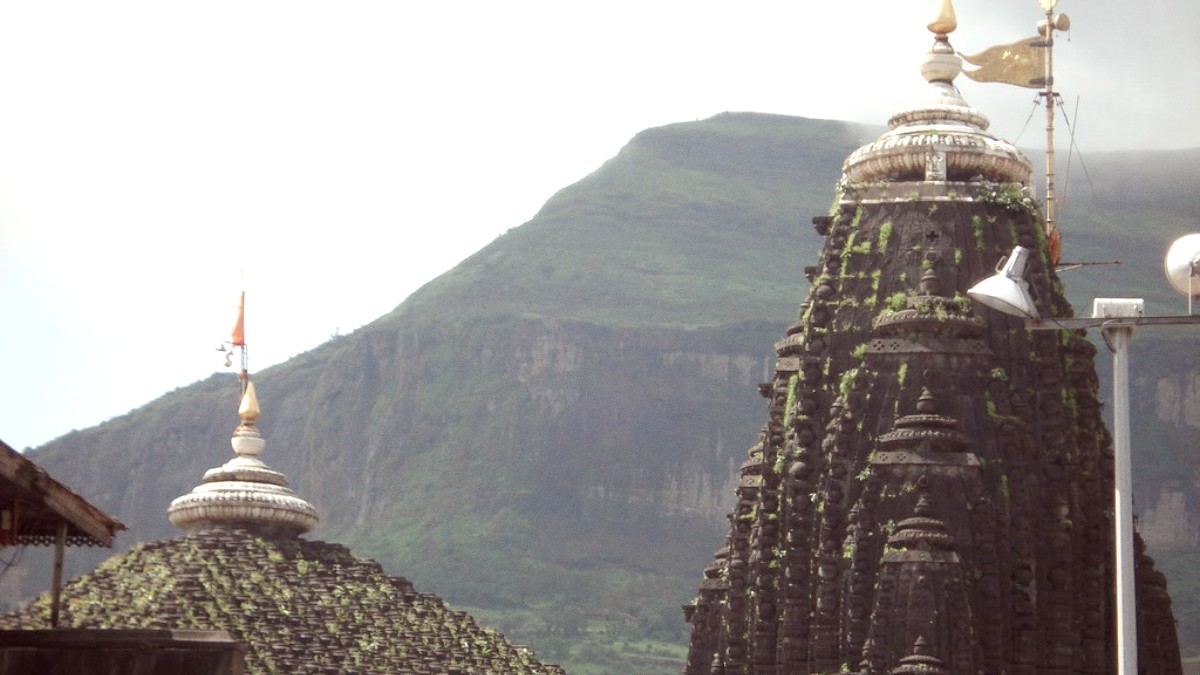
Maharashtra, India
The city stands at an elevation of about 584 meters (1,916 feet) above sea level. Its location at the foothills of the Western Ghats, also known as the Sahyadri mountain range, shapes its varied topography. These mountains contribute to Nashik's distinct climate, providing a natural boundary and influencing its lush green surroundings, especially after the monsoon season. The Sahyadri range presents scenic beauty, with many hills and forts that serve as popular trekking destinations for locals and visitors. Nashik functions as the administrative headquarters for both Nashik District and the broader Nashik Division, a pivotal role in the region's governance and development.
Nashik is a deep mythological and historical background. Hindu mythology places Lord Rama, Lakshmana, and Sita here during their fourteen-year exile. This connection to the epic Ramayana. The name "Nashik" itself comes from Lakshmana cutting off the nose ("nasika" in Sanskrit) of the demoness Surpanakha at this spot. This mythological tale intertwines the city's identity with one of India's most important religious narratives, drawing countless devotees to its sacred sites.
Nashik is one of four sites for the Kumbh Mela, a mass Hindu pilgrimage. This spiritual gathering occurs every 12 years. Millions of pilgrims gather in Nashik for a holy dip in the Godavari River, specifically at Ramkund. The next Kumbh Mela in Nashik is in 2027.
Nashik holds the title of the "Wine Capital of India," a designation reflecting its numerous vineyards and wineries. The region's climate and fertile soil, around the Gangapur Dam area, offer conditions for grape cultivation. Pioneering wineries like Sula Vineyards place Nashik on the global wine map, attracting wine enthusiasts and contributing to a growing agro-tourism sector.
Nashik holds status as a pilgrimage center. It hosts the Kumbh Mela every 12 years. The city home to several ancient temples. The Trimbakeshwar Shiva Temple, one of the twelve Jyotirlingas, is a prime example of its spiritual importance. The Kalaram Temple in Panchavati and the sacred Ramkund on the Godavari River are other significant sites that draw pilgrims daily.
Leading producer of grapes and onions in India. A variety of fruits, vegetables, and grains are grown.
Sectors like automotive, pharmaceuticals, and engineering established a presence. Modern infrastructure development follows this growth.
A blend of ancient religious heritage, natural beauty, thriving agriculture, and modern industries.
Vineyard tours and wine tasting add a contemporary layer to its identity.
Devotional energy around temples and riverfronts.
Nashik presents itself as a city of compelling contrasts. It holds distinction for several characteristics: its numerous vineyards and wineries earning it the title of "Wine Capital of India"; its status as a pilgrimage center, hosting the Kumbh Mela and housing ancient temples; its strength as a major agricultural hub, especially for grapes and onions; and its recent growth as an industrial center.
Historically, Nashik witnessed the rise and fall of several powerful dynasties. It was part of the expansive Mauryan Empire, then the Satavahana Dynasty, known for its patronage of arts and architecture. The Rashtrakuta Dynasty followed. The Yadavas, Delhi Sultanate, and Bahamani Sultanate also held sway. During the 18th century, Nashik became a significant center under the Maratha Empire, especially during the rule of the Peshwas. Nashik also played a role in the Indian independence movement.
Nashik's position within Maharashtra makes it a well-connected hub for travel. Its proximity to major cities like Mumbai and Pune points to good connectivity, whether by road, rail, or air. This location also places it strategically for visitors exploring other parts of Maharashtra, making it a valuable starting point or stopover on a wider regional journey. The city’s elevation gives a slightly milder climate than the coastal plains.
When viewing Nashik's geographical location on a map, notice its position relative to the large dams and reservoirs in the Western Ghats. These water bodies, like Gangapur Dam, shape local climate and present recreational activities.
Visitors to Nashik experience a sense of layered history in the ancient temples, the bustling ghats, and the traditional architecture. The city's past forms a continuous narrative that informs its present, offering a context to its customs, festivals, and way of life.
When you visit, traditional elements like street markets and small temples coexist with modern amenities like shopping malls and international hotel chains. This reflects Nashik's evolution.
Lush landscapes and natural beauty, especially after the monsoon season, mark the area.
Home to numerous vineyards and wineries, drawing wine enthusiasts.
A significant pilgrimage center with ancient temples and the Kumbh Mela site.
The Godavari River, flowing through the city, creates several ghats (steps leading to water) that serve as centers for religious rituals and daily life, anchoring Nashik to its spiritual roots. The river also aids the region's agriculture.
Early foundations for administration and cultural development.
Patronage of arts and architecture, rock-cut caves and inscriptions remain.
Significant center during the Peshwa rule; many temples and public works constructed.
This elevation presents relief from extreme humidity, especially during the dry seasons.
The Western Ghats influence its lush green surroundings, especially after the monsoon.